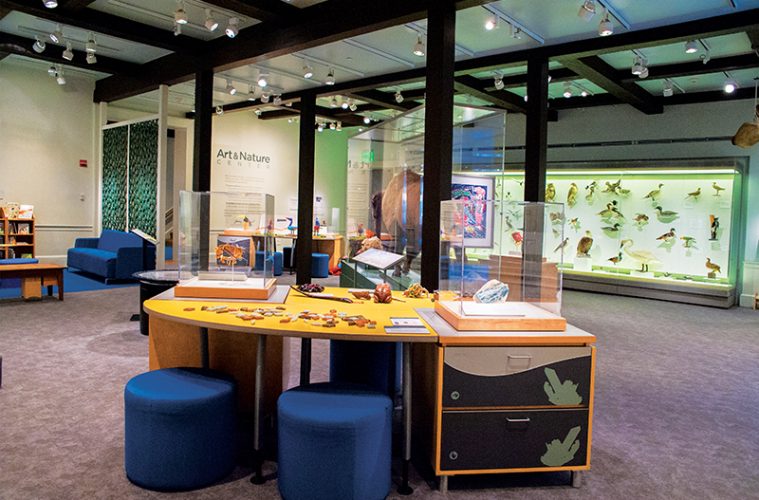In October 2013, hundreds of visitors gathered at the Peabody Essex Museum to celebrate the welcomed reopening of the Art and Nature Center, which underwent a comprehensive redesign that began in July 2012. Jane Winchell, the Sarah Fraser Robbins director of the art and nature center, explains, “The greatest benefit from the redesign was the opportunity to create two separate spaces in the center—a section for ongoing exhibits that the public can visit anytime, and a changing exhibit area for art exhibitions that are targeted to a slightly older age range, and will change yearly.” The center’s current exhibit, Beyond Human: Artist-Animal Collaborations began in October and will run until September 7, 2014.
The redesign, based in part on visitor feedback, brought numerous upgrades to a space previously dedicated primarily to children’s activities. “The center is an intergenerational space,” says Winchell. “We worked to make it inviting, fun, and engaging for visitors of all ages, and we’ve seen a great response from adult visitors who come in without any children at all.”
For Winchell, the center’s new technological capabilities are among the most exciting advancements: “Technological upgrades in the space allow us to connect installations like the Museum of Insects to the Internet. The Create Space studios have new projection capabilities for visiting artists who want to run a drop-in program for families or a workshop for adults.” These programs take place on weekends and offer fun, hands-on projects. “[They] are a way to facilitate artistic experiences,” says Winchell. We want to blur the line between exhibits and experiences with projects kids can make themselves and bring home.”
These facilitated experiences are one of many attractions. The ongoing exhibit portion of the center creates the opportunity for “open-ended play,” as Winchell calls it—a sort of choose-your-own-adventure. The Create-a-Creature area provides animal-themed building blocks for children to create any type of creature they can imagine. The Drawing Station provides colored pencils, paper, and various live plants in sculptural boxes and pots to inspire kids to follow their instincts. Using plants as artistic inspiration is another way for kids to connect the arts with nature and the sciences. “We provide tips on different methods of drawing, but also maintain that following their own ideas is essential,” says Winchell. Additionally, rotating Activity Boxes offer a different choice every few weeks, so that returning visitors will always find something new.
The Art and Nature Center has another equally important goal: providing visitors with a connection to the North Shore. The museum, while internationally focused, finds its roots in the ecologically and historically rich region. “We show collections, such as Native American art, that date back hundreds of years, to provide a lens [through] which visitors can understand our artistic, historical, and natural connec- tion to the place where we live,” Winchell explains. “The changing exhibit space also offers a way of looking at relevant topics that involve contemporary art.” pem.org

